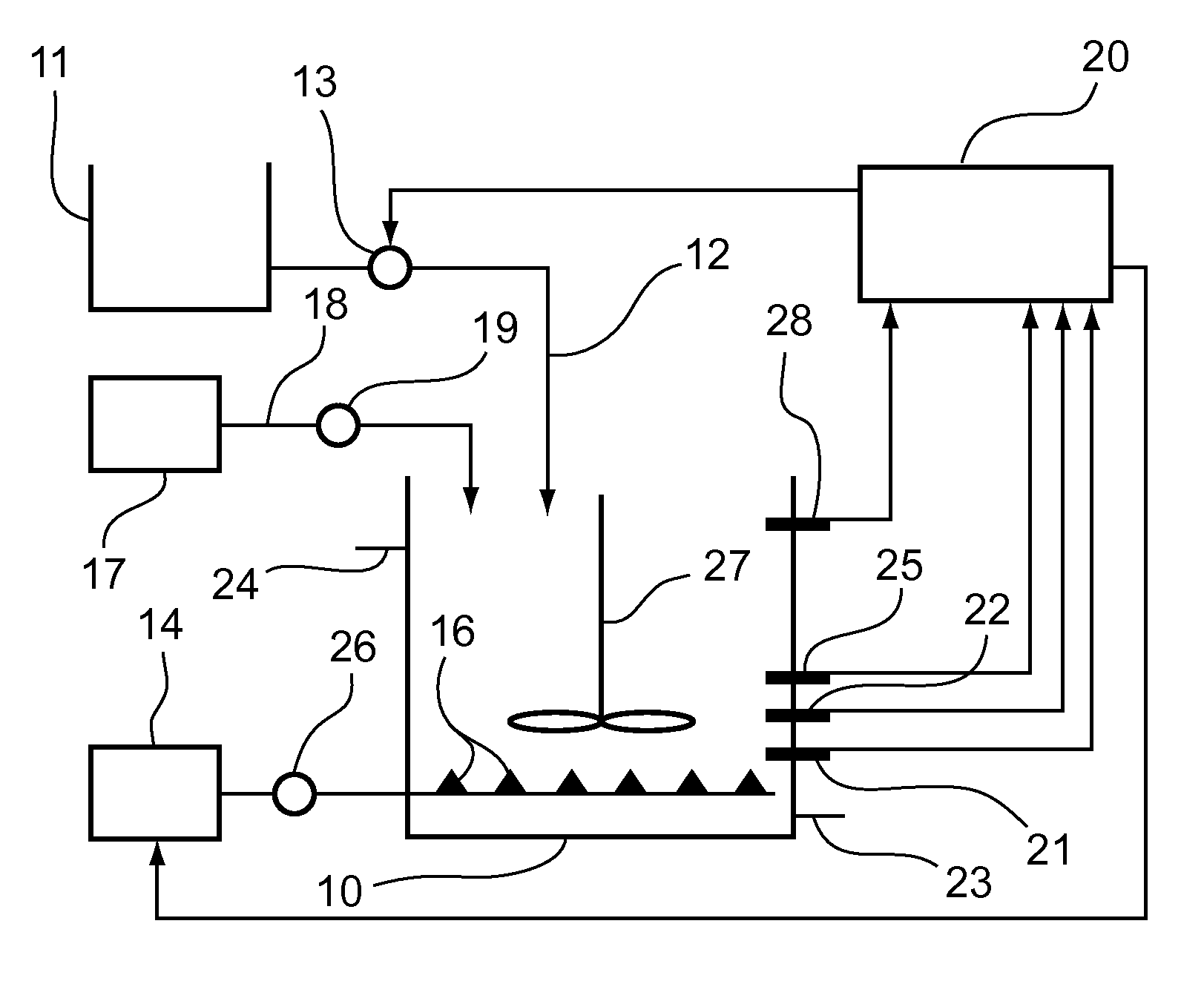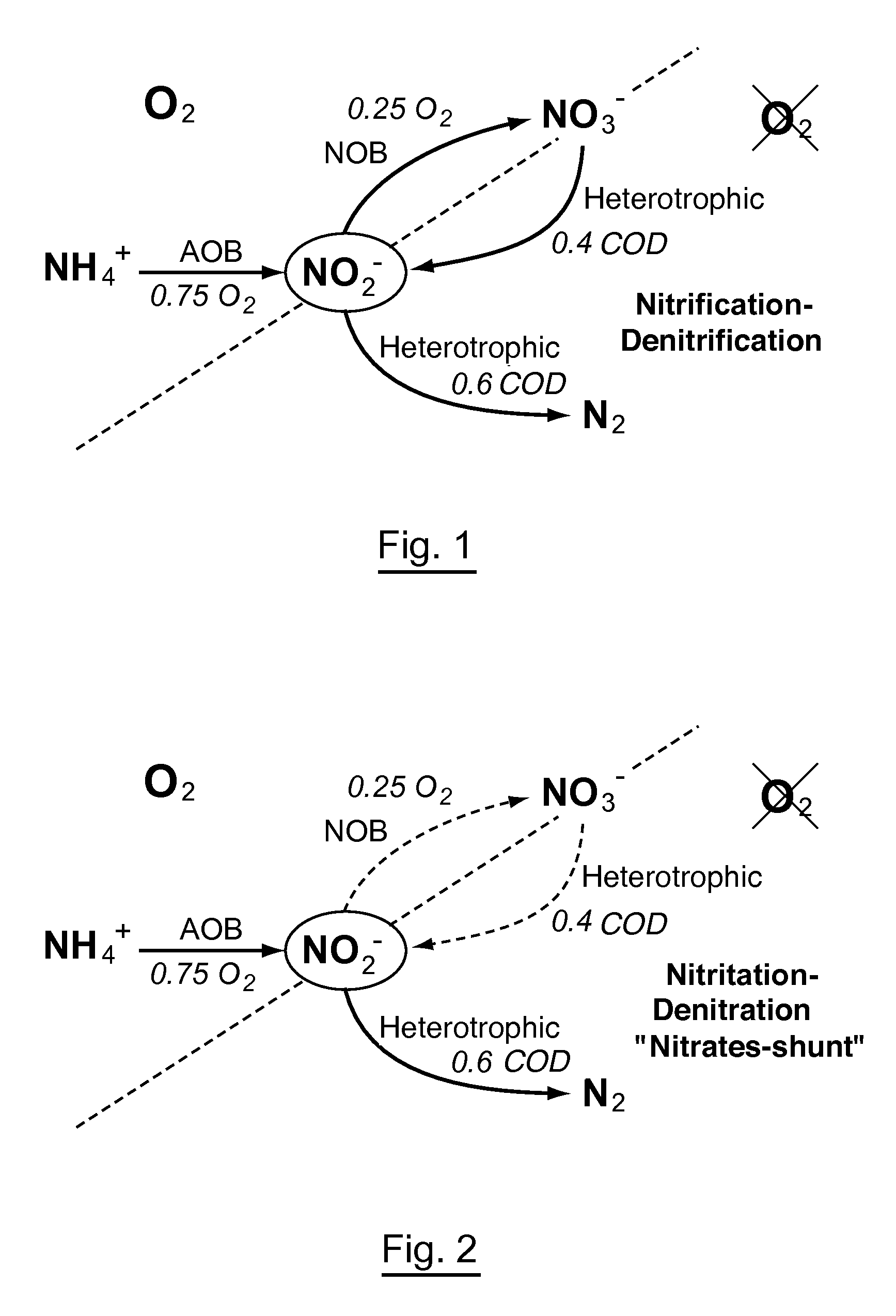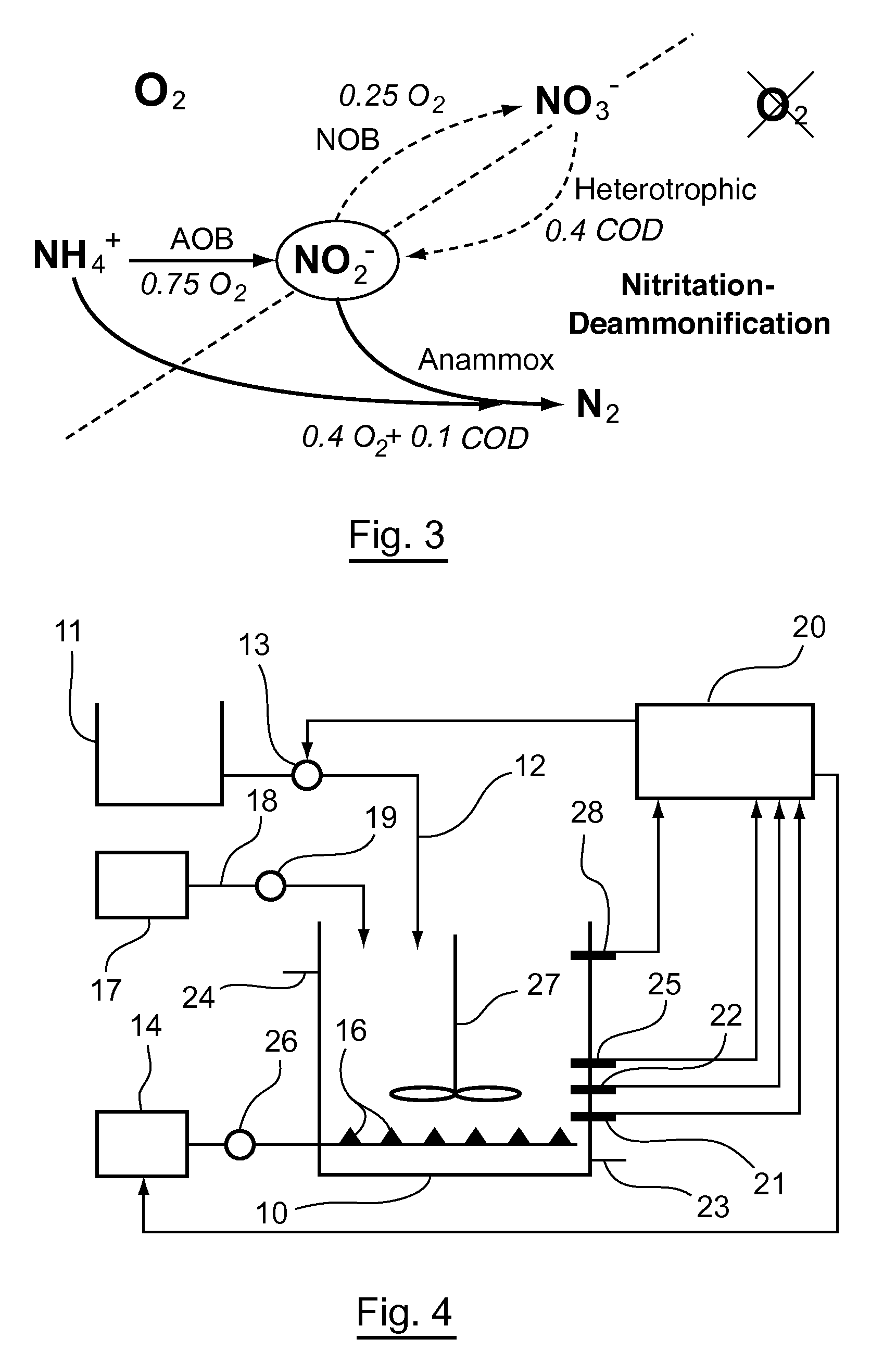Method for treating water within a sequential biological reactor including an in-line measurement of the nitrite concentration inside said reactor
a biological reactor and in-line measurement technology, applied in water treatment parameter control, water/sludge/sewage treatment, instruments, etc., can solve the problems of inability to optimize the duration, inability to adjust, and draw on numerous measurement techniques, so as to optimize the total duration of a cycle and reduce the volume of the sequential biological reactor. , the effect of optimizing the total duration of the cycl
- Summary
- Abstract
- Description
- Claims
- Application Information
AI Technical Summary
Benefits of technology
Problems solved by technology
Method used
Image
Examples
Embodiment Construction
[0112]7.1. Reminder of the Principle of the Invention
[0113]The general principle of the invention relies on the implementation, in a method for treating water charged with nitrogen in the form of ammonium by nitritation-denitritation, of a step for in-line measurement of the concentration of nitrites in the water present in the sequential biological reactor within which the nitritation and denitritation reactions take place and at least one step for monitoring at least one step of the method, said monitoring step taking account of the results of said in-line measurement of the concentration of nitrites in order to more efficiently control the biological processes involved in said treatment.
[0114]The inventors have shown that knowledge of the nitrite concentration in the water present in the reactor gives a precise indication of the state of the method, i.e. on the level of progress of the biological processes implemented as well as the state of progression of the reduction of the ni...
PUM
| Property | Measurement | Unit |
|---|---|---|
| temperature | aaaaa | aaaaa |
| volume | aaaaa | aaaaa |
| temperature | aaaaa | aaaaa |
Abstract
Description
Claims
Application Information
 Login to View More
Login to View More - R&D
- Intellectual Property
- Life Sciences
- Materials
- Tech Scout
- Unparalleled Data Quality
- Higher Quality Content
- 60% Fewer Hallucinations
Browse by: Latest US Patents, China's latest patents, Technical Efficacy Thesaurus, Application Domain, Technology Topic, Popular Technical Reports.
© 2025 PatSnap. All rights reserved.Legal|Privacy policy|Modern Slavery Act Transparency Statement|Sitemap|About US| Contact US: help@patsnap.com



